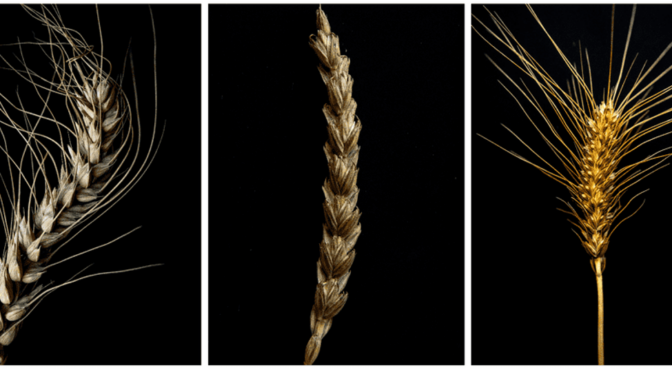Response Doctoral Program
Since the domestication of wheat about 7,500 years ago, this important crop has undergone significant changes (de Sousa et al. 2021). Through targeted breeding, high-yielding wheat varieties have been developed to feed the growing global population, but this comes at the cost of reduced genetic diversity (Balfourier et al. 2019).
This diversity not only includes visible traits, such as plant height and grain size, but also important hidden traits, like disease resistance and grain quality. Most of the wheat grown in the fields today follows a uniform “ideotype” that has been optimized for modern, high-input agricultural systems, especially since the “Green Revolution” in the 1960s. Unfortunately, because of this limited diversity, wheat has become more vulnerable to threats like disease and climate-related extremes. Therefore, it is a promising approach to study traditional wheat varieties, which have been less impacted by the loss of diversity and are better adapted to specific local environments. Farmers have cultivated and selected these traditional varieties over generations in different regions of the world, which hold immense value for sustaining future food security and must be preserved before they are lost forever.
Katharina Jung is a PhD Researcher at the Department of Evolutionary Biology and Environmental Studies at the University of Zurich as well as a RESPONSE fellow in the PhD program Science and Policy. Her research is focused on ensuring stable wheat production and food security by studying the different traits and DNA of traditional Asian varieties of wheat. She aimsto determine which varieties exhibit resistance to yellow rust and which genomic regions contribute to the genetic mechanisms underlying these resistances. Katharina’s research is supported by the prominent breeding center, International Maize and Wheat Improvement Center (CIMMYT), which breeds plants for future climates, thereby working toward ensuring sustainable food systems, and the Kyoto University, which provided the valuable wheat varieties used in her study.
In her work on disease resistance, Katharina and her collaborators focused on a disease called yellow rust (also known as stripe rust caused by Puccinia striiformis f.sp. tritici), a fungal pathogen recognizable by its characteristic yellow to orange stripes on wheat leaves, as shown in Figures 1 and 2 (Jung et al. 2024). As one of the most devastating threats to wheat yields, yellow rust deteriorates grain quality, affecting nearly 88% of global wheat production (Beddow et al. 2015). Since 2000, the pathogen has been spreading aggressively globally, aided by its ability to adapt to warmer climates. Even though this disease can be managed by the use of fungicides, their applications can have a negative impact on the environment, and the pathogen can develop resistance to these fungicides. Therefore, this necessitates alternative solutions, such as breeding rust-resistant wheat varieties. In order to breed resistant wheat varieties, the first step is to identify wheat plants that have these specific resistant traits, followed by identifying the genomic regions conferring those resistances.
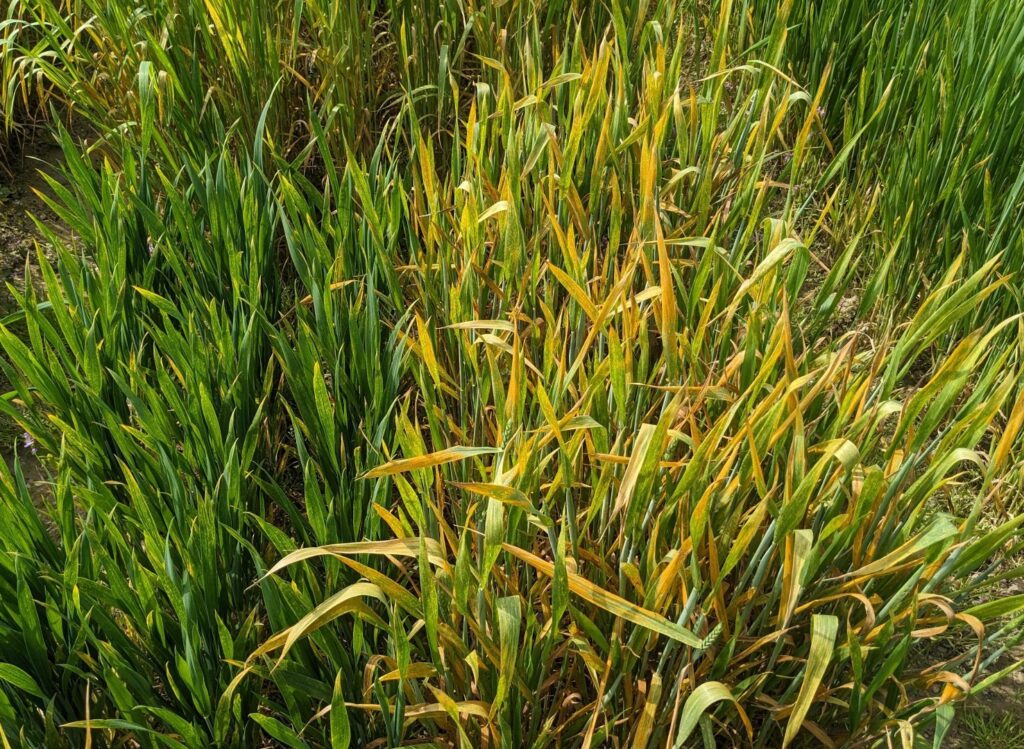
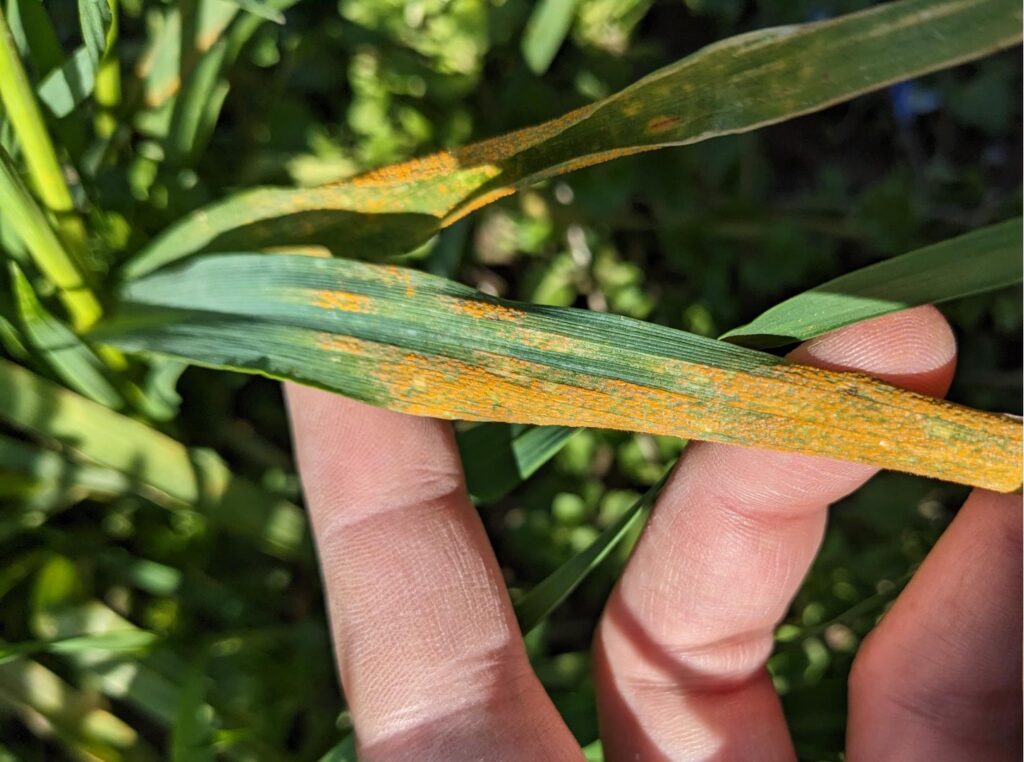
To find resistant wheat plants, Katharina and her collaborators screened both traditional and modern varieties from Asia, which are very diverse and have been significantly underrepresented in modern breeding programs (Sansaloni et al. 2020; Lehnert et al. 2022). These varieties were grown in large-scale field experiments in Switzerland and Mexico and were artificially infected with yellow rust. Once the first symptoms became visible, each plot was visually evaluated, and the leaf area covered by the infection on the leaves was recorded. These experiments were repeated in different years to confirm that the observations were reproducible.
In addition to the field experiments, DNA sequencing was used to identify regions of the genome associated with resistance to the disease. By comparing the DNA of resistant plants, Katharina and her collaborators were able to locate specific regions in the genome, called quantitative trait loci (QTL), that contribute to yellow rust resistance.
Key Research Findings
Katharina’s research uncovered two new genomic regions that confer resistance to yellow rust. One region was specific to a traditional variety from Nepal, while the other one was more broadly distributed across wheat varieties from Nepal, Pakistan, and China. This is especially interesting because the southern Himalayan region, where these varieties originate, is believed to be the origin of the yellow rust pathogen itself (Ali et al. 2014). Based on her findings, she hypothesized that traditional wheat varieties from this area might harbor unique and stable resistances to yellow rust, suggesting that these resistances could potentially provide long-lasting protection against a wide range of pathogen strains. This highlights the importance of conserving these traditional wheat varieties, which have been carefully selected and maintained by farmers over generations.
Societal Relevance of Research Findings
Katharina’s findings offer valuable insight for wheat breeders to integrate these novel yellow rust resistances into their breeding programs. Nevertheless, further research is needed to identify the underlying genes responsible for these resistances and to better understand the molecular mechanisms behind them. Katharina suggests that the near-Himalayan region could be a promising area for a more targeted search of novel yellow rust resistances. She additionally emphasizes that the utilization of these resources and the benefit-sharing should be in close collaboration with local communities, as it is their knowledge that has paved the way to the current diversity we observe in those landscapes. This study further underscores the potential of traditional wheat varieties and the need for ongoing investment in their conservation, both in genebanks and in farmers’ fields.
Outcomes from the Stakeholder Workshop
Katharina shared her research findings at the International Wheat Congress in Perth, where she received an award for the best presentation by an Early Career scientist from the Wheat Initiative.
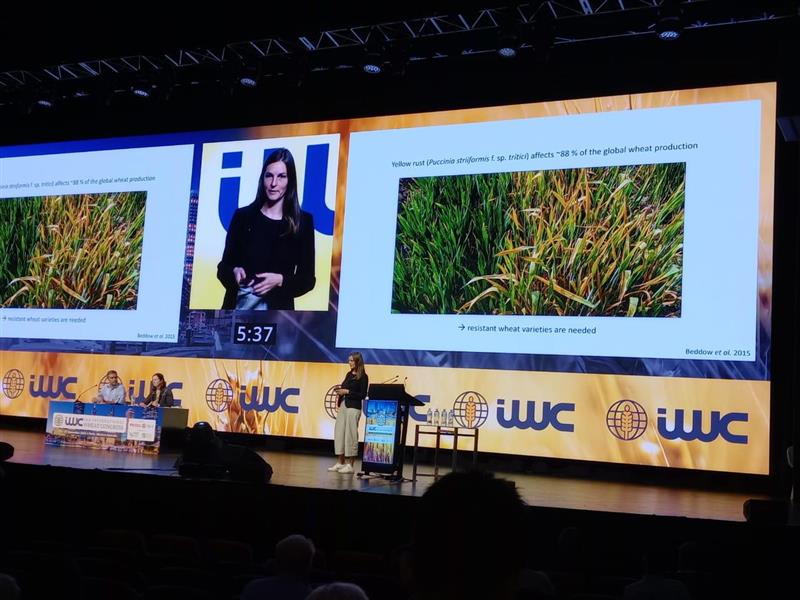
Every year, the International Maize and Wheat Improvement Center (CIMMYT) in Mexico conducts a Basic Wheat Improvement course, which provides training to wheat scientists and breeders from all around the globe. As a part of this course, Katharina conducted a workshop, discussed this work with the participants, and visited the field experiments with them. This exchange with people from wide-ranging backgrounds in the wheat sector helped to contextualize her findings within agricultural and practical applications.
References
Ali S, Gladieux P, Leconte M, Gautier A, Justesen AF, Hovmøller MS, Enjalbert J, de Vallavieille-Pope C (2014) Origin, Migration Routes and Worldwide Population Genetic Structure of the Wheat Yellow Rust Pathogen Puccinia striiformis f.sp. tritici. PLoS Pathog 10:. https://doi.org/10.1371/journal.ppat.1003903
Balfourier F, Bouchet S, Robert S, de Oliveira R, Rimbert H, Kitt J, Choulet F, Paux E (2019) Worldwide phylogeography and history of wheat genetic diversity. Sci Adv 5:eaav0536. https://doi.org/10.1126/sciadv.aav0536
Beddow JM, Pardey PG, Chai Y, Hurley TM, Kriticos DJ, Braun HJ, Park RF, Cuddy WS, Yonow T (2015) Research investment implications of shifts in the global geography of wheat stripe rust. Nat Plants 1:1–5. https://doi.org/10.1038/nplants.2015.132
de Sousa T, Ribeiro M, Sabença C, Igrejas G (2021) The 10,000-year success story of wheat! Foods 10:2124. https://doi.org/10.3390/foods10092124
Jung K, Akiyama R, Nie J, Nitta M, Hamaya N-B, Qureshi N, Bhavani S, Wicker T, Keller B, Kishii M, Nasuda S, Shimizu KK (2024) Unveiling yellow rust resistance in the near-Himalayan region: Insights from a nested association mapping study. unpublished – in review
Lehnert H, Berner T, Lang D, Beier S, Stein N, Himmelbach A, Kilian B, Keilwagen J (2022) Insights into breeding history, hotspot regions of selection and untapped allelic diversity for bread wheat breeding. Plant J 1–22. https://doi.org/10.1111/tpj.15952
Sansaloni C, Franco J, Santos B, et al (2020) Diversity analysis of 80,000 wheat accessions reveals consequences and opportunities of selection footprints. Nat Commun 11:. https://doi.org/10.1038/s41467-020-18404-w
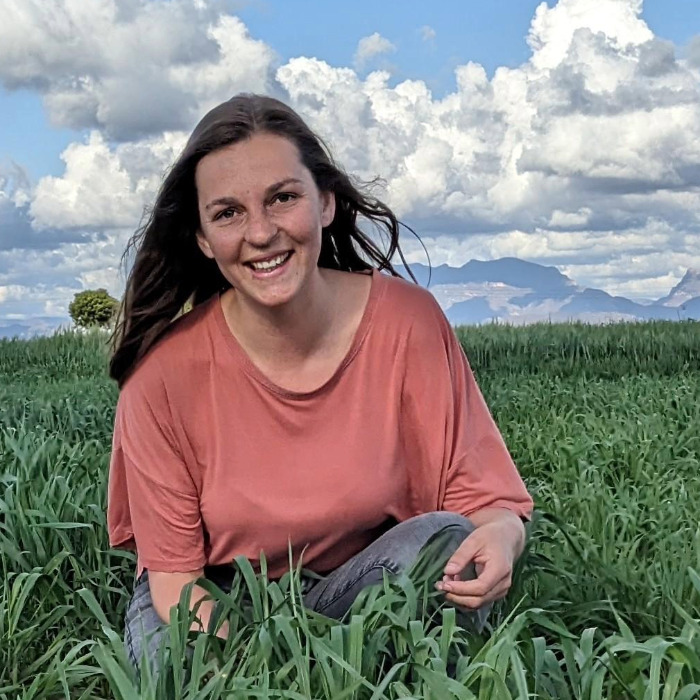
Katharina Jung is a fellow of the RESPONSE Doctoral Program (DP) «RESPONSE – to society and policy needs through plant, food and energy sciences» funded by the European Union’s Horizon 2020 research and innovation program under the Marie Skłodowska-Curie Grant Agreement No 847585.
This article is co-authored by Katharina Jung and Mary Ann George (University of Zurich, RESPONSE Program office assistant).

